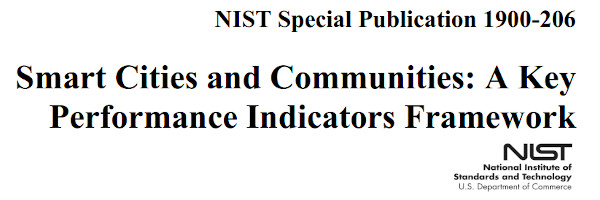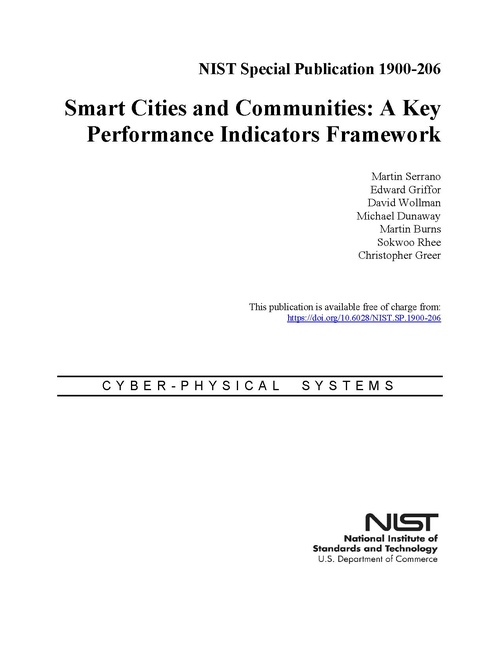Smart Cities: A Key Performance Indicators Framework
| News | |
| Image | 
|
|---|---|
| Published | 2022-02-24 |
| Point(s) of Contact | Michael Dunaway Sokwoo Rhee |
| Organization(s) | NIST |
| Where | Gaithersburg MD |
| Display | Yes |

| |
This publication presents research findings and scientific work that advance the development and progression of smart city and community measurement methodology. The term 'smart,' as used in the phrase 'smart cities,' is defined here as the efficient use of digital technologies to provide prioritized services and benefits to meet community goals.
Without reliable measurement methods for 'smart,' there is a gap in the ability to answer questions such as 'how smart is my smart city plan,' or 'how can my community strategy be made smarter?' This report addresses this gap by introducing a measurement framework for assessing the direct and indirect benefits of smart city technologies. The Holistic KPI (H-KPI) Framework builds on conventional Key Performance Indicators (KPI) methods and accounts for unique characteristics such as varying districts and neighborhoods, differences in population and economic scale, the reuse of previously deployed technologies, and other factors relevant to a city or community. The Framework provides the basis for developing measuring methods and tools that allow for integration, adaptability, and extensibility at three interacting levels of analysis – i.e. technologies, infrastructure services, and community benefits. The H-KPI method provides a structured representation of smart city/community information flows that supports system visualization, serves as the basis for quantitative metrics for measuring 'smart,' and enables computational methods for systems design, analysis, operations, and assurance. The five core metrics of the method are: alignment of KPIs with community priorities across districts and neighborhoods; investment alignment with community priorities; investment efficiency; information flow density; and quality of infrastructure services and community benefits. Applications of the H-KPI approach include strategic planning, systems design and assurance, and operations management.
- Citation Special Publication (NIST SP) - 1900-206
- Report Number 1900-206
- NIST Pub Series Special Publication (NIST SP)
- Pub Type NIST Pubs
- Download Paper
- https://doi.org/10.6028/NIST.SP.1900-206
- Local Download
- Keywords
Cyber-physical systems, Data, Data modeling, Holistic key performance indicators (H-KPIs), Internet of Things (IoT), Key performance indicators (KPIs), Smart cities and communities, Smart infrastructure, advanced communications